We foster bilingual global citizens.
Mandarin Immersion Leadership
Developing globally competent students
We believe building skills to contribute and succeed in the global community is an integral part of education. Through our world-class Mandarin Immersion instruction, students learn to bridge borders on a daily basis and learn how to communicate and build relationships across languages, cultures, and geographies.
Higher academic outcomes for dual language learners
Research1 and Yu Ming achievement data show that as dual language learners, Yu Ming students are on track to achieve substantially higher academic outcomes than their monolingual peers, regardless of race, class, gender and learning differences. They are also more likely to pursue college after high school2. And the “cognitive lift” that comes from mastering a language as complex as Mandarin amplifies these benefits.
1 Thomas & Collier 2011
2 Lindholm-Leary 2002
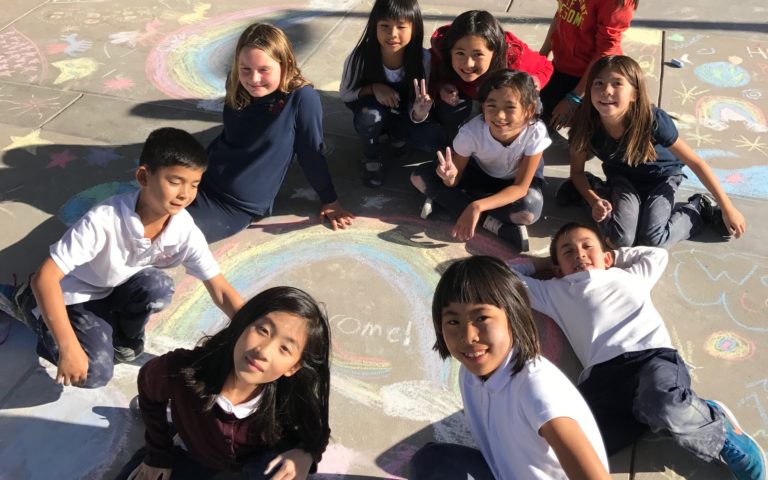
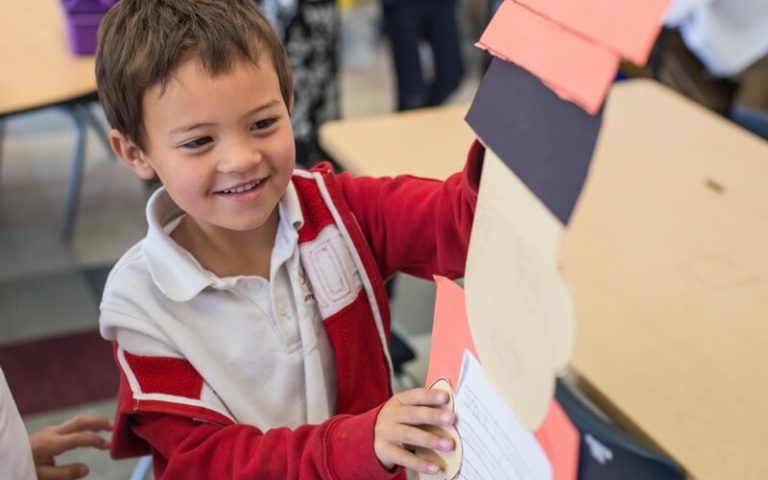
Mandarin immersion thought leadership
In spring 2017, Yu Ming was profiled by the Center for Global Education at the Asia Society as being among the top Chinese language immersion programs across the country. We collaborate with other Mandarin immersion schools nationwide to strengthen resources, share expertise and develop innovative practices. Our teachers and leaders present at national conferences and convenings annually.
Global exchange and service
Every spring, our 8th grade students participate in a 2-week study tour to China. In addition to cultural and historical study around China, our students spend 5 days with an innovative bilingual school in Ningbo, China. Using their Chinese skills in an immersive way, students develop a deeper understanding and connection with Chinese culture.
Key highlights for students on this global exchange and service include the following:
- Participate in Chinese middle school classes
- Experience dorm life
- Collaborate with Chinese 8th graders in a design-and-build challenge
- Stay with host families to experience Chinese home life
- Engage in community service for a local village school
- Visit cultural sites
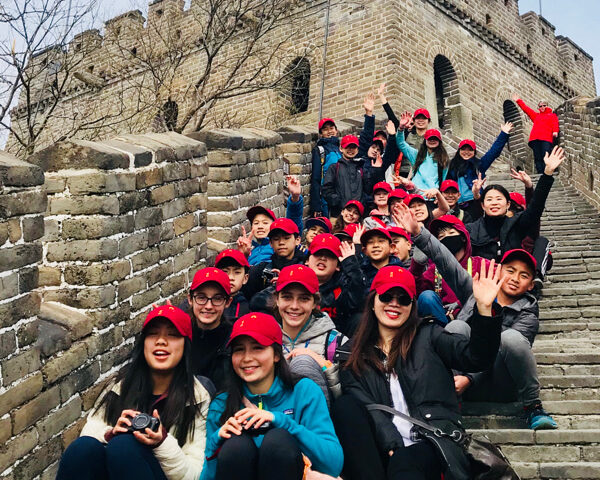
Immersion Model By Grade
| Grades | % in Mandarin | Subjects Taught in Mandarin | Subjects Taught in English |
| K-2 | 90% | Chinese, Math, History/Social Studies, Art, Science | English, P.E., Music |
| 3-4 | 70% | Chinese, Math, Science | English, Science, History/Social Studies, Art, Music, P.E. |
| 5-6 | 50% | Chinese, Math, History/Social Studies | English, Science, Math, Art, Music, P.E. |
| 7-8 | 30% | Math, Science, Mandarin | English, History, Art, Music, P.E. |
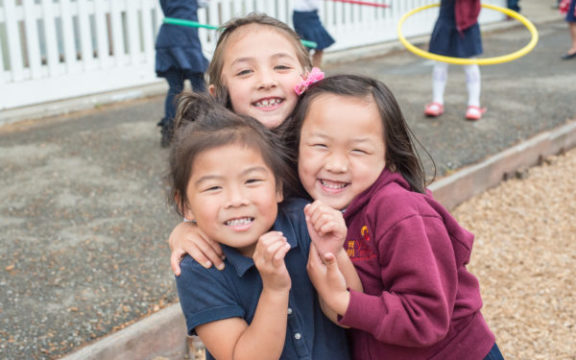
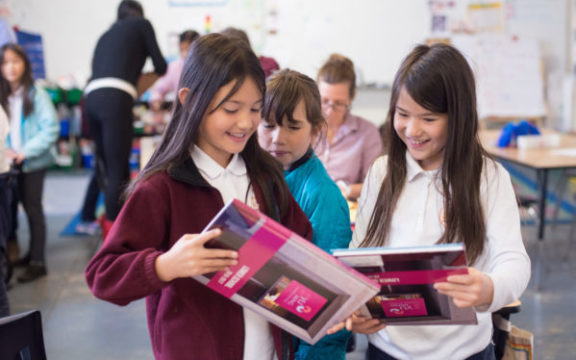
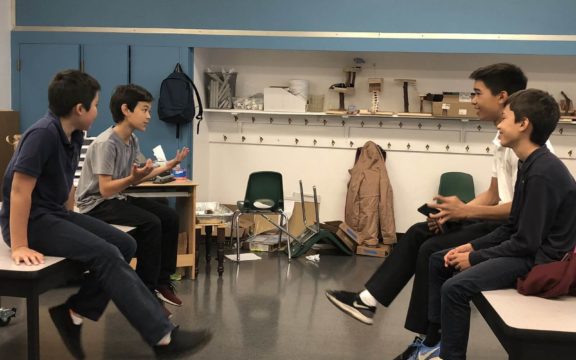
Lower Elementary Program
(Kindergarten to Grade 2)
- Immersion Model: Instruction is 90% Chinese, 5 days per week.
- Language Learning Best Practices: Regardless of prior Chinese language experience, we set each of our students up for success in our immersive curriculum through language learning best practices, active academic scaffolding, and social emotional support.
- Interactive & Project-Based Learning: Our early learners learn Chinese through lessons that are rich in oral language, interactive, and project based.
Upper Elementary Program
(Grades 3-5)
- Immersion Model: Instruction shifts to 70% Chinese and 30% English.
- Small Group Learning: Differentiated small groups are designed intentionally to meet personalized learning goals through Yu Ming’s leveled reading system and comprehensive writing program, so students become strong readers and writers in both English and Chinese.
- Real-world Projects: Bilingual projects deepen in complexity and leverage real-word connections.
- Varied Instructional Approaches: Teachers continue to use a range of instructional approaches, including guided and independent practice, small-group instruction, technology integration, and one-on-one conferencing.
Middle School Program
(Grades 6-8)
- Immersion Model: 30% Chinese, 70% English instruction, with an option to continue in a 50/50 program through electives.
- Chinese and English Project Time: Students apply the content they’ve learned to rich real-world projects.
- Personalized Learning Time: Students choose from among bilingual resources how they want to learn content in line with their personal needs and preferences.
- Mentorship: A dedicated mentor supports each student in setting short and long term goals.
- Bilingual Portfolio Defense: Eighth Grade students assemble a portfolio of their best work and “defend” it in Chinese and English in front of an audience of educators, peers, and community members.
More information about Mandarin Immersion
Yu Ming’s program offers systematic language and literacy development in Chinese and English in a student-driven personalized bilingual, biliterate, and bicultural program. Our personalized learning model focuses on each child’s individual needs and development.
Elementary School (Grades K–5) students at Yu Ming are continuously building background knowledge and oracy. In addition, Yu Ming has adapted the Reader’s and Writer’s Workshop model to implement a challenging and rigorous immersion-balanced literacy program in which students have numerous opportunities to demonstrate all three modes of communication: interpersonal, interpretive, and presentation. The Kindergarten program focuses on oral proficiency within a developmentally appropriate early-literacy program. Bilingual fluency and literacy skills are systematically developed from Kindergarten through Grade 8. Yu Ming has developed a leveled reading system supplemented by a leveled online reading platform. Yu Ming has also built a vertically articulated writing system from Kindergarten through Grade 8 in both English and Chinese with a common framework to model excellent writing, guide practice, and support all students. Throughout the instructional day, Yu Ming teachers use a range of instructional approaches, including explicit instruction, guided and independent practice, small-group instruction, technology integration, and one-on-one conferencing, to provide students multiple avenues for accessing, understanding, and applying new knowledge and skills.
Foreign language immersion is a well-researched educational program in which the school curriculum is taught through the medium of a foreign language.[1] Exposing children to a second language at an early age stimulates the development of critical thinking and problem solving skills.[2] Further, children in language immersion programs reach higher levels of language proficiency than those in other types of world language programs while also demonstrating increased English vocabulary and overall enhanced cognitive development[3] and consistently outscore monolinguals on tests of verbal and nonverbal intelligence[4].
- Center for Applied Linguistics, http://www.carla.umn.edu/immersion/bibliographies/one-way.html. See also http://www.ncssfl.org/papers/BenefitsSecondLanguageStudyNEA.pdf for a complete summary of the varied benefits of second language acquisition at a young age.
- Center for Applied Linguistics
- Curtain, H. & Dahlberg, C.A. (2004), Languages and children: Making the match. New languages for young learners, grades K-8. Boston, MA: Allyn & Bacon.
- Bruck, M., Lambert, W.E., Tucker, R. (1974), “Bilingual Schooling through the Elementary Grades: the St. Lambert Project at Grade Seven”. Language Learning 24. No. 2:183-204.
Academic outcomes of bilingual students are better than those of their monolingual peers. This is true for students of every race, class, and gender, and for students with a broad range of learning differences. (Thomas & Collier 2011) Bilinguals demonstrate greater cognitive flexibility, increased attention control, better memory, and superior problem solving skills, as well as an enhanced understanding of their primary language. Furthermore, dual language students are more likely than comparison peers to want to go to college immediately following high school and enroll in higher-level math courses. (Lindholm-Leary 2002)
